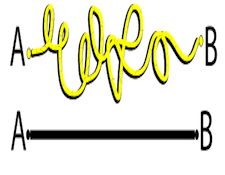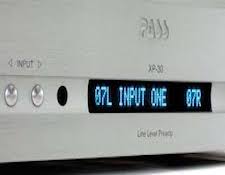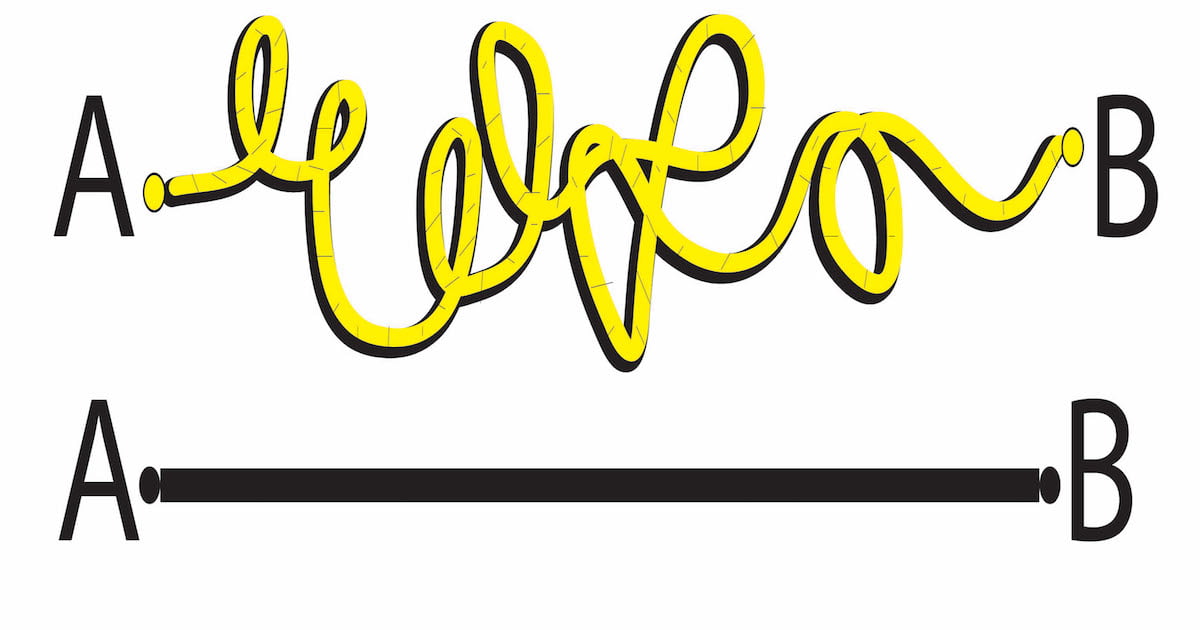It’s the time of year for saving money!
Conventional wisdom, and frankly, common sense tells us the shortest distance between two points is a straight line. If you wanted to travel from one city to another several hundred miles away, you’d simply look at the map and pick out the most direct route. Is that always the best way to go, however? Maybe that route goes through all manner of small towns and frequent stoplights. If your main concern was travel time, it might be better to take the interstate. Even if it is slightly longer it is usually faster.
 In an audio system, conventional wisdom again tells us the shortest signal path is the best and most direct route in component design. Engineers will universally try to design a product that has the fewest number of component parts as possible. Additional circuitry only being added because it is necessary to achieve some desired sonic or design function.
In an audio system, conventional wisdom again tells us the shortest signal path is the best and most direct route in component design. Engineers will universally try to design a product that has the fewest number of component parts as possible. Additional circuitry only being added because it is necessary to achieve some desired sonic or design function.
As digital audio has become increasingly popular, DAC’s have become more and more popular. Ranging from something relatively inexpensive at a cost of $150.00 to the hyper expensive at a cost of $80,000.00, the DAC as a component has become a mainstream part of our audio signal chain. Today, even affordable DAC’s are very often impressively feature laden. Many DAC’s today will process Hi Rez, DSD, MQA, upsample, provide filters and offer multiple inputs to accommodate different components. One feature, however, has basically transformed the DAC into a dual threat component. That feature is volume control.
If we carry the shortest signal path theory further, using a DAC with volume attenuation allows the elimination of a preamp from the signal chain. Again, conventional wisdom holds the increasingly popular theory that removing the preamp improves the sound because there is one less component in the way – as well as the elimination of the associated cables and power cords. Whether or not you actually subscribe to this theory, one thing that holds undeniably true is the cost of your system should be reduced. Obviously, you are eliminating an entire component. But just like our two lane road vs. the interstate, is that always the best way to go?
 When designing a DAC, engineers are optimally concerned with, among other things, inputs, the digital conversion circuitry, filters, up sampling and the analog output section. An obvious question then is how much effort was put into the DAC’s volume control? How is the consumer to know if the volume control of a DAC, regardless of the component cost, was added because the designer or management thought it should just be there and did so with only marginal thought to the design? If this describes your DAC, how proficient is it as a preamplifier?
When designing a DAC, engineers are optimally concerned with, among other things, inputs, the digital conversion circuitry, filters, up sampling and the analog output section. An obvious question then is how much effort was put into the DAC’s volume control? How is the consumer to know if the volume control of a DAC, regardless of the component cost, was added because the designer or management thought it should just be there and did so with only marginal thought to the design? If this describes your DAC, how proficient is it as a preamplifier?
When designing a preamp, different conditions must be considered. For instance, the input stage needs to be designed to be compatible with various components. When designing the output stage of a preamp, one important design criteria is to be sure long cable lengths are addressed as well as circuitry to handle balanced and unbalanced cables. It is also important to consider impedance issues. Another consideration is a design that will accommodate a wide variety of amplifier requirements. Because having an amp by a different manufacturer, and a different design, is more of a distinct probability as having an amp and preamp made by the same company.
 A preamp must have a volume control that is not only quiet but is also completely transparent. Some preamps address volume control by use of a photo coupler – thus eliminating the physical connection between the volume control and the signal path. Adjusting the volume couples a microcomputer and a photo receiver, volume adjustment is made and the photo coupler disengages – virtually eliminating the possibility of noise generated by volume attenuation. Regardless of the cost, very few, if any DAC’s have that level of engineering for a feature not related to the component’s primary function.
A preamp must have a volume control that is not only quiet but is also completely transparent. Some preamps address volume control by use of a photo coupler – thus eliminating the physical connection between the volume control and the signal path. Adjusting the volume couples a microcomputer and a photo receiver, volume adjustment is made and the photo coupler disengages – virtually eliminating the possibility of noise generated by volume attenuation. Regardless of the cost, very few, if any DAC’s have that level of engineering for a feature not related to the component’s primary function.
A preamp, unlike a DAC, is driving both current and voltage of the circuit and that is where the music lies. Because of this, it is possible the elimination of a preamp will negatively affect dynamics, as well as the linear and 3D presentation of the soundstage. And depending on the components themselves, there is the possibility the output stage of a DAC is less than a preamp – again, affecting the musical quality. Lastly, a preamp may provide balance and tone controls, (although some of the more expensive preamps might not) something a DAC, generally speaking, does not provide.
Cost obviously plays a significant role. Because of the cost of a high performance system, cost reduction is an obvious goal. Eliminating the preamp can often result in an overall cost reduction of as much as 20%. If the elimination of a preamp only results in a minimal reduction of sound quality, but offers a significant reduction in cost, many people will opt for the reduction in sound quality.
 Space is another consideration. Many audiophiles these days may not have the space for a dedicated listening room. Especially those that live in crowded cities. Perhaps eliminating the preamp enables the use of a smaller rack or allows the system to fit somewhere out of the way.
Space is another consideration. Many audiophiles these days may not have the space for a dedicated listening room. Especially those that live in crowded cities. Perhaps eliminating the preamp enables the use of a smaller rack or allows the system to fit somewhere out of the way.
All of this is of course moot if your system is going to have a source other than digital. If, in addition to digital, you plan to have a turntable, or even more rare a reel to reel in your system, you will be basically looking for a preamp.
Use of a preamp is highly debatable and there are likely valid arguments in support of either position. Like so many other things in our audio system, it is a decision made after considering a number of different variables. In addition to being a personal choice, it is also one that is probably not easily made. Sonics vs. cost. The oldest game in the audiophile book. How do you play?








